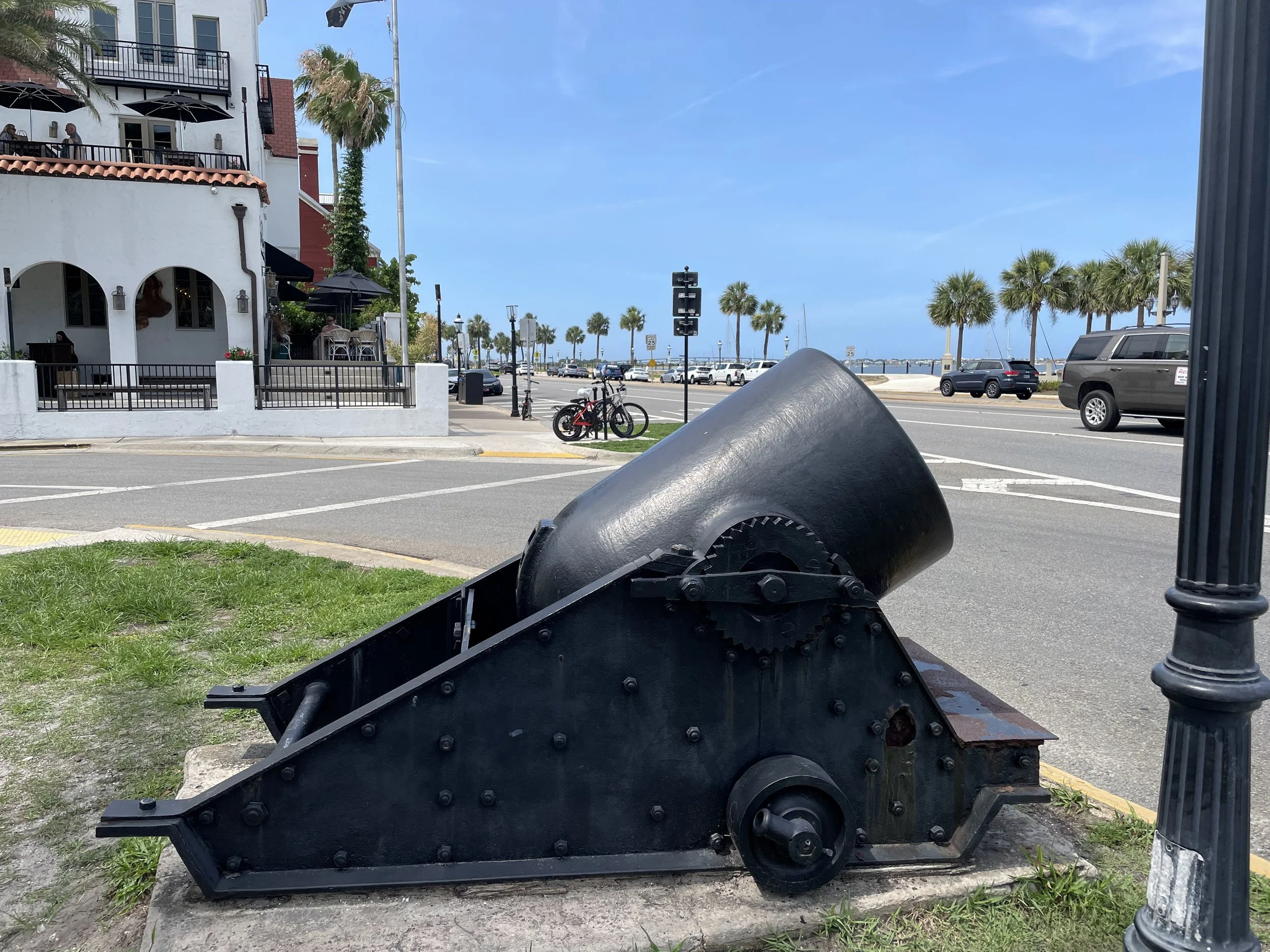US Army 10-Inch Seacoast Mortar, Pattern 1861 in St. Augustine, Florida
US Army 10-Inch Seacoast Mortar, Pattern 1861, displayed in St. Augustine, Florida.
US Army 10-Inch Seacoast Mortar, Pattern 1861, displayed in St. Augustine, Florida. Manufactured by Cyrus Alger & Co. in 1862, this is one of only eight of the type made - of which two survive. It strongly resembles its 13-Inch “big brother” but weighs only 7,640 pounds verses around 17,000 pounds for the 13-inch. It is considerably larger than the 10-Inch Siege Mortar, Pattern 1861 which weighed slightly less than 2,000 pounds. According to Olmstead et al., both the 10-Inch Seacoast and 10-Inch Siege mortars fired the same 91-pound shell. However the Seacoast mortar could be used with up to 10 pounds of propellant whereas the siege mortar only used up to 4 pounds of propellant.
A similar mortar appears in a 19th Century Photograph of the water battery at Fort Marion / Castillo de San Marcos. Given that the four other artillery pieces nearby have plaques stating that they came from Fort Marion, this cannon may be the one pictured.
Display at the Castillo de San Marcos which shows a 19th Century photo of the water battery at the fort. A similar mortar appears in the left side of the photograph.
US Army 10-Inch Seacoast Mortar, Pattern 1861, displayed in St. Augustine, Florida.
US Army 10-Inch Seacoast Mortar, Pattern 1861, displayed in St. Augustine, Florida.
US Army 10-Inch Seacoast Mortar, Pattern 1861, displayed in St. Augustine, Florida.
US Army 10-Inch Seacoast Mortar, Pattern 1861, displayed in St. Augustine, Florida.






